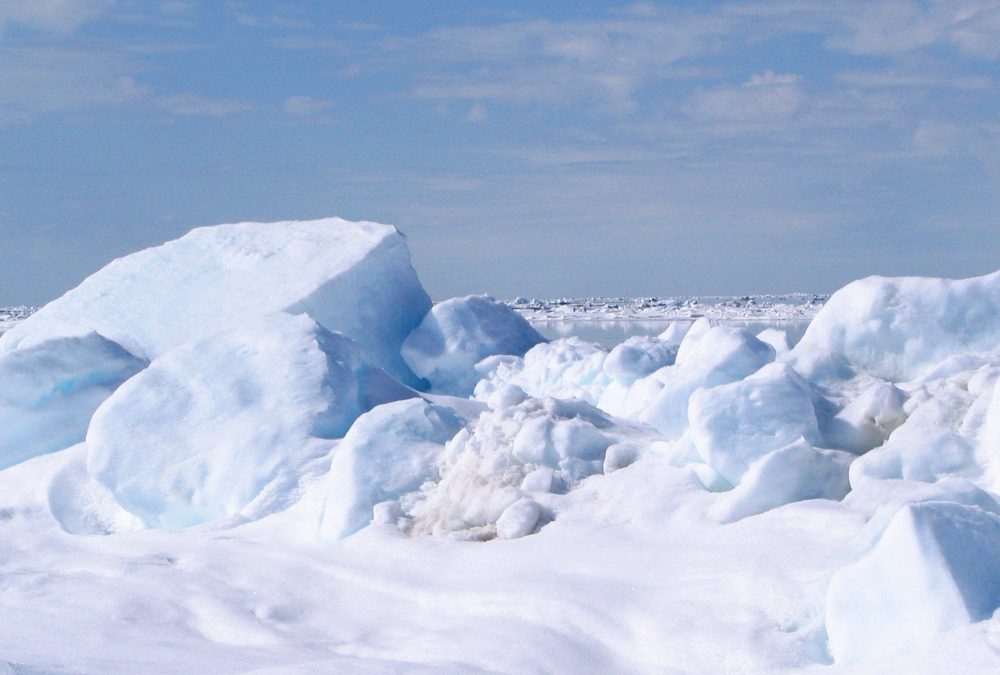
by Rick O'Connor | Jun 28, 2024
As I mentioned in Part 1, I taught Environmental Science in the 1990s and the first decade of the 21st century. The information provided below was taught at that time. The purpose of this series on Another Look at Climate Change is to see if the predictions made at that time are occurring.
Over the 4.5 billion years of our planet’s existence the climate has been altered by volcanic eruptions, changes in solar input, continental drift, and impacts by large meteors. Over the past 900,000 years our atmosphere has experienced periods of cooling and warming known as glacial and interglacial periods. We have been fortunate to be in an interglacial period over the last 10,000 years that has allowed humans to exist and grow. For the past 1000 years temperatures have remained relatively stable but in the last 100 years there has been a noticeable increase. This began when humans began to clear the forests and burn fossil fuels.
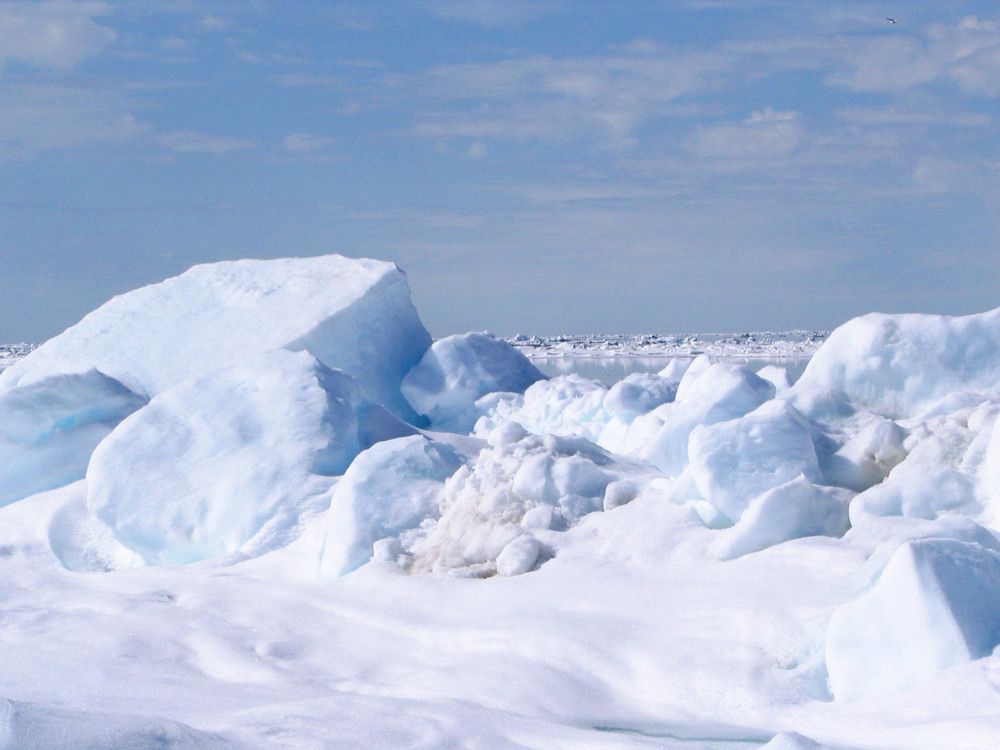
Our planet has gone through extreme climate change in the past.
Photo: NOAA.
Evidence of these temperature changes has come from analysis of radioisotopes, fossils, plankton, ocean sediments, and tiny bubbles in ice cores. Additional evidence has come from pollen found at the bottom of lakes, tree rings, bat dung in caves, and temperature records collected since 1861.
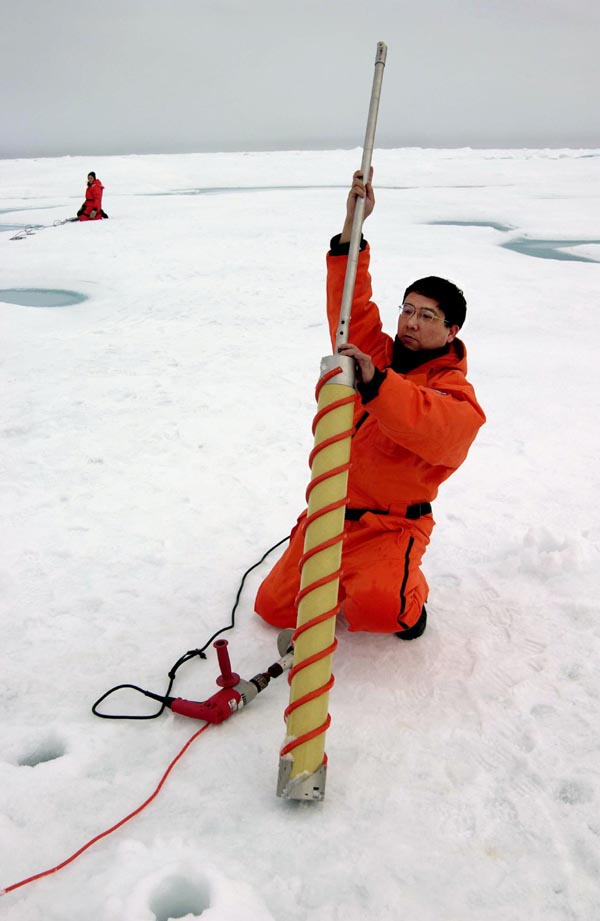
An ice core is being removed by a NOAA scientist.
Photo: NOAA
Interestingly we need the greenhouse effect to maintain the temperatures within a range for us to survive. The Swedish scientist Svante Arrhenius first explained this greenhouse effect in 1896. Solar radiation penetrates our atmosphere and warms the surface of the earth. Hot air generated from this surface heating rises but is trapped by a layer gas that includes carbon dioxide, methane, and water vapor. These gases act as a greenhouse allowing light through but trapping the rising heated air. Hence, they are known as greenhouse gases. Without this natural greenhouse layer, the planet would be too cold for us to live here.
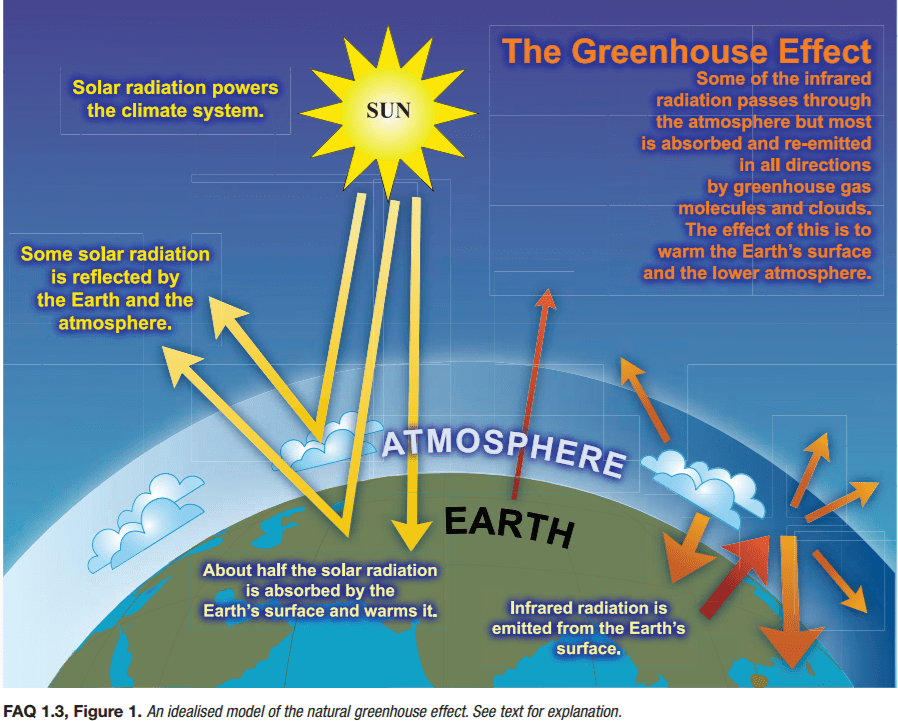
The greenhouse effect.
Image: NOAA
The industrial revolution began about 300 years ago. The burning of fossil fuels, and loss of photosynthetic trees due to deforestation, resulted in significant increases in these greenhouse gases. According to a 2007 study, if CO2 emissions continue to increase at a rate of 3.3% each year, we will reach CO2 concentrations near 560 parts per million by 2050 and could reach levels near 1,390 ppm by 2100. At the time this was stated, 2011, scientific studies and models suggested we should prevent CO2 from exceeding 450 ppm. Going beyond this we might exceed a tipping point that could trigger climate change impacts for centuries. NOTE: NOAA published in 2023 that the atmospheric CO2 concentration was 419 ppm.
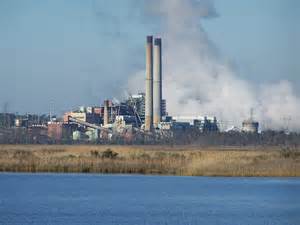
Power plant on one of the panhandle estuaries.
Photo: Flickr
In 1988 the United Nations and the World Meteorological Organization established the Intergovernmental Panel on Climate Change (IPPC) to review past climate changes and predict future ones. This network included over 2500 climate experts from 130 countries. In their 2007 report they stated…
- It is very likely (90-99% probability) that the lower atmosphere is warming.
- Human activities are responsible for this.
Evidence used for these statements include:
- Between 1906-2005 the mean global surface temperature had risen 1.3°F. Most of the increase had taken place SINCE 1980.
- Annual greenhouse gases emissions from human activity have risen 70% between 1970 and 2005. Average CO2 emissions were higher than they have been in 650,000 years.
- Since 1960 Arctic temperatures have risen twice as fast as the rest of the planet.
- In some parts of the world glaciers and sea ice were melting, rainfall patterns were changing, and prolonged droughts were on the rise.
- During the 20th century sea levels rose between 4-8 inches.
Data in 2011 showed that the melting of ice in the Arctic had increased since the 2007 IPPC report. One scientist, Allan Robock, stated that the ice was melting at a faster rate than their computer models said it would.
What is the scientific consensus about future temperature change?
- It is very likely (90-99% probability) that human activities are the cause of the recent increase. Particularly the burning of fossil fuels.
- It is very likely (90-99% probability) the earth’s mean surface temperature will increase 3.6-8.1°F between 2005 and 2100. NOTE: Since 2005 the rate of warming has doubled. In one year (2023) the mean temperature of the planet increased 1.44°F – the largest annual increase in 144 years. This was partially due to being an El Nino year.
In 2011 there was the question as to whether the oceans could help absorb CO2 from the atmosphere. At that time the ocean was absorbing between 25-30% of the CO2 emitted by humans. However, the solubility of CO2 in the oceans decreases with increasing water temperatures. As the oceans warm some of the dissolved CO2 would be re-released into the atmosphere and could amplify global warming and climate change. At that time, the oceans had warmed between 0.6-1.2°F during the 20th century. According to a 2007 study the oceans were absorbing less CO2 than they had in the past. NOTE: A 2017 study indicated that mean sea surface temperatures of the oceans have increased 0.22°F since 2000. This is twice as fast as the early models predicted.
The consensus is that the warming predicted by the computer models used at the time is occurring and – in some cases – faster than they thought.
In Part 3 we will look at what they thought some of the possible effects of this warming trend could be and whether any of those predictions have actually happened.
References
Miller, G.T., Spoolman, S.E. 2011. Living in the Environment; Concepts, Connections, and Solutions. 16th Edition. Brooks and Cole. Belmont CA. 674 pp.
Lindsey R. 2024. Climate Change: Atmospheric Carbon Dioxide. NOAA Climate. https://www.climate.gov/news-features/understanding-climate/climate-change-atmospheric-carbon-dioxide.
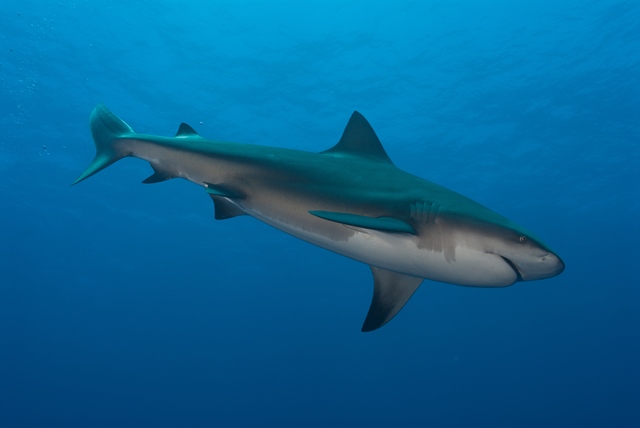
by Rick O'Connor | Jun 21, 2024
Today’s society is more educated about sharks and shark behavior than our forefathers. In the 18th, 19th, and much of the 20th century we thought of sharks as mindless eating machines – consuming anything available. Whalers would witness sharks consuming carcasses, as did many other fishermen. Sailors noted sharks following the smaller boats across the ocean, always present when bad situations occurred.
During World War II the U.S. Navy was moving across the Pacific and a deeper understanding of sharks was needed to keep servicemen safe. The sinking of the USS Indianapolis pushed the Navy into a larger research program to determine how to repel sharks and better understand what made them tick. After the war funding for such research continued. One of the leading researchers was Dr. Eugene Clark, who eventually founded the Mote Marine Laboratory in Sarasota with the intention of developing a better understanding of shark behavior. Dr. Clark frequently appeared on the Undersea World of Jacques Cousteau educating the public about how sharks function and respond to their environment. All with the idea of how to better reduce negative shark encounters.
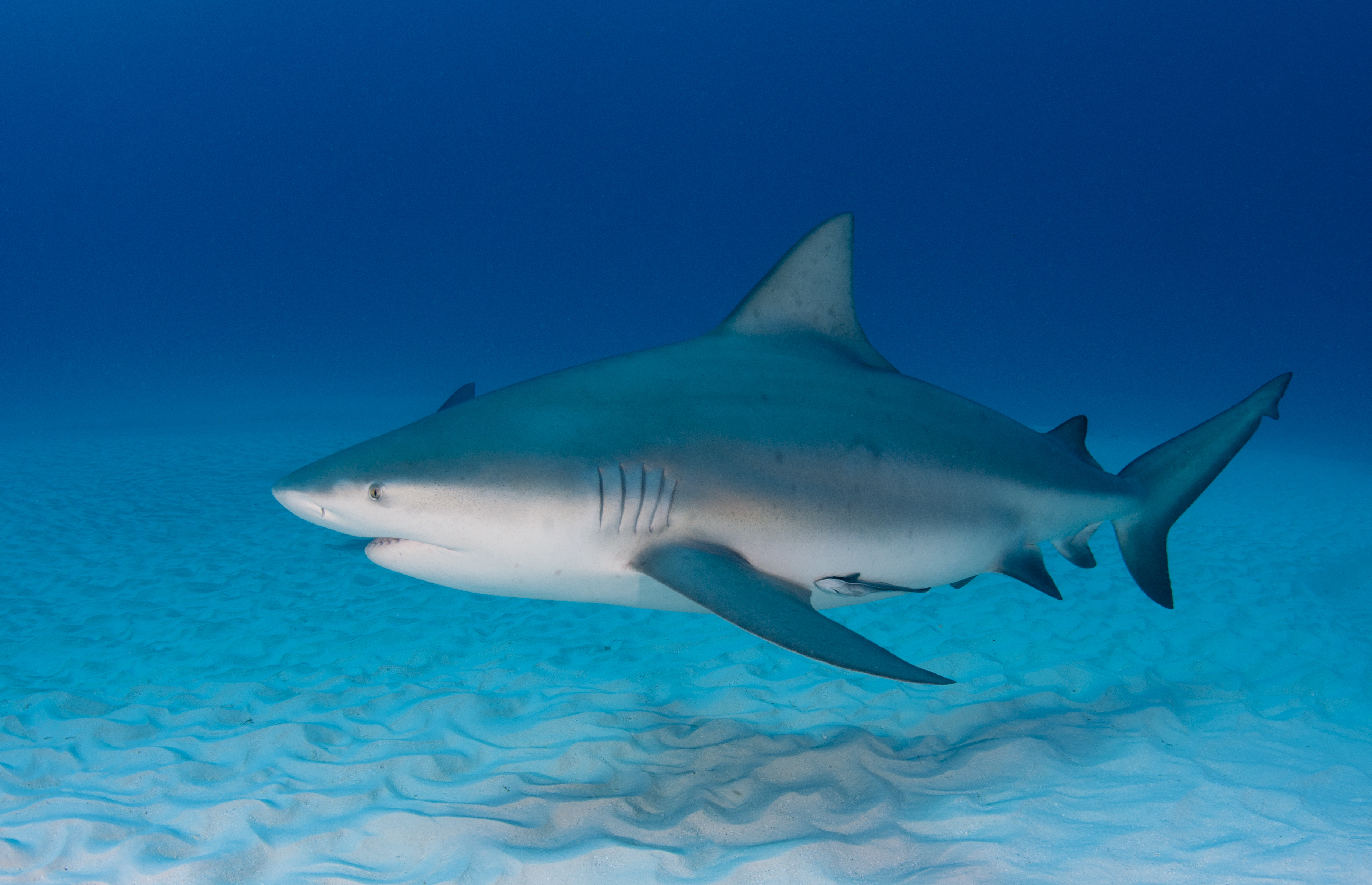
Pregnant Bull Shark (Carcharhinus leucas) cruses sandy seafloor. Credit Florida Sea Grant Stock Photo
In the 1970s Peter Benchley wrote Jaws but included a marine biologist as one of the key characters who would provide science insight into how sharks work. The film was a cultural phenomenon. I remember standing in a line that wrapped the cinema twice to get in. This was followed by more funding for shark research and a better understanding of how they work. This was then followed by a popular summer series known as “Shark Week”, which remains popular to this day. Many of the old tales of shark behavior were disproved or explained. The idea of a mindless eating machine was replaced with a fish that actually thinks and responds to certain cues. People began to realize that shark attacks are quite rare and could be explained if we understood what happened leading up to the attack.
We now understand that sharks are fish, in a class where the members have cartilaginous skeletons (they lack true bone). They are one of the most perceptive creatures in the ocean, using their senses to detect potential prey and that there are signals that can “turn them on”. On the side of their bodies there is a line of small gelatinous cells that can detect slight vibrations in the ocean – from up to a mile away. The ocean is a noisy place, and it appears that sharks respond to different frequencies. I like to use the analogy of yourself being in a large student cafeteria. Everyone is talking and it is very noisy. Then someone calls your name. Somehow, amongst all the background clatter, you hear this and respond to it. Studies suggest that sharks do the same. With all of the noise moving though the ocean, sharks hear things that catch their attention and then move towards the source.
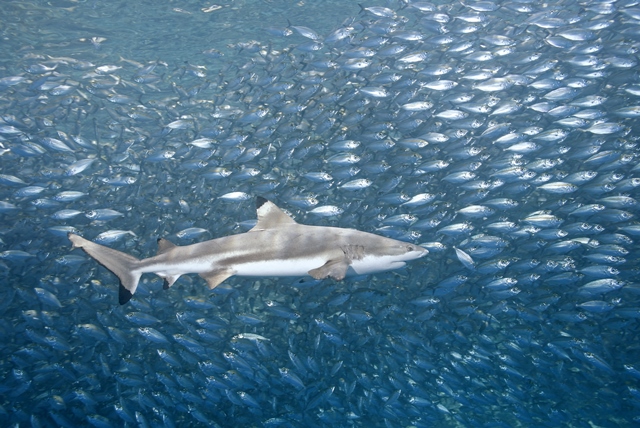
Blacktip sharks are one of the smaller sharks in our area reaching a length of 59 inches. They are known to leap from the water. Photo: Florida Sea Grant
As they get closer their sense of smell kicks in. Everyone has heard that sharks can detect small amounts of blood in large amounts of seawater – remember “Bruce” from Finding Nemo? It is true, but they do have to be down current to pick up the scent and they will now focus their search to find the source. Some studies suggest other “odors”, such as the urine of seals, might produce the same reaction that blood does. All may lead to shark to think a possible meal is nearby.
Eyesight is not great with any creature in the sea. Light does not travel well in water – but sharks do have eyes and they do see well (one of the old tales science disproved – that sharks are basically “blind”). However, because of the low light, they do have to be close to the target to get a visual. Some studies suggest that sharks are detecting shadows or shapes they may confuse as a potential prey, bite it, and then release when they discover it was not what they thought it was. This idea is supported by the fact that many who are bitten experience what is called “bite and release” – and they turn and swim away. It is also known that sharks have structures in the back of their retinas that act as mirrors, collecting what light is available, reflecting it within the eye, and illuminating their world. They believe they see pretty well at night – better than us for sure. The image they see may appear to be a prey item and may be what is producing the vibrations and odors that they detected.

The Scalloped Hammerhead is one of five species of hammerheads in the Gulf. It is commonly found in the bays. Photo: Florida Sea Grant
And they have one more “sixth sense” – the ability to detect weak electric fields. The shark’s mouth is not in position to attack prey as they move forward. It is on the bottom of their head and, one of the old tales, was that sharks must swim over their prey to bite it. Video taken during the filming for Jaws showed that the shape of the shark’s head changes at the last moment of an attack. The entire head becomes distorted to get the mouth in the correct position for the bite. The “eyes roll back” – as the old fishermen used to say – and the jaws move up and forward. At this point the shark can no longer use its eyes to zero in on the target. However, they have small cells around their snout called the Ampullae of Lorenzini that can detect the small electric fields produced by muscle movement – even the prey’s heartbeat – and know where they are. But – they must be very close to the prey to detect this.
Understanding all of this gives scientists, and the public, a better idea of how sharks work. What “turns them on” and how/when they will select prey. One thing that has come from all of this is that we do not seem to be high on their target list.
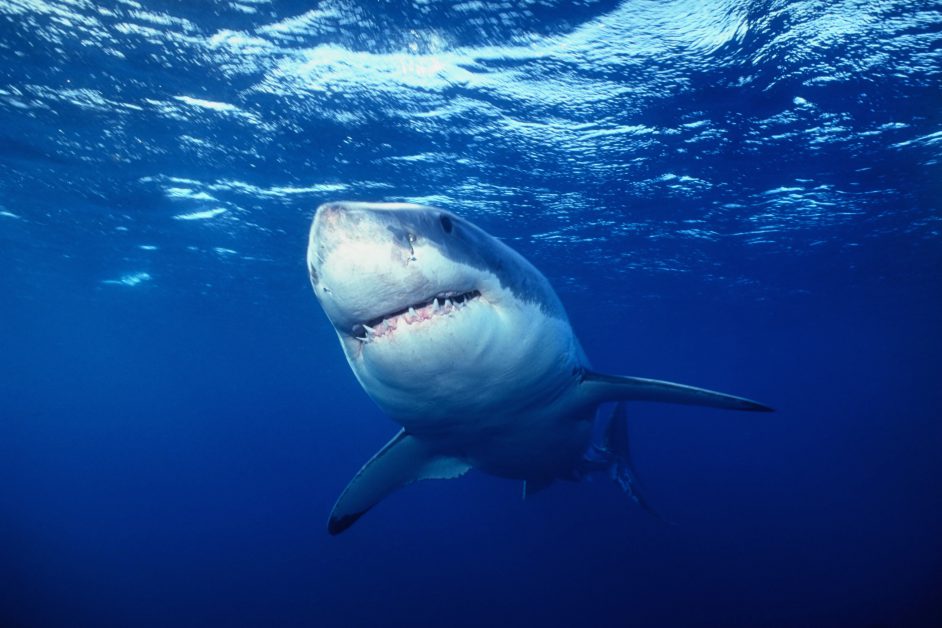
The Great White shark.
Photo: UF IFAS
The International Shark Attack File is kept at the Florida Museum of Natural History in Gainesville. It has cataloged shark attacks from around the world dating back to 1580. The File only catalogs UNPROVOKED attacks. With provoked attacks – those occurring while people are grabbing them, or fishing for them, or in some way provoked an attack – we understand why the shark bit the human. It is the unprovoked attacks that are of more interest. Those where the person was not doing anything intentionally to invite a shark bite, but it happened.
One thing we can tell from this data is that unprovoked attacks are not common. Since 1580, they have logged 3,403 unprovoked shark attacks worldwide. Considering how many people have swum in the ocean since 1580, this is a very small number. Note, the File is only as good as the reports it gets. In the past, many unprovoked attacks were not reported. But in our modern age of communication, it is rare that such an attack does not make the headlines today.

The Bull Shark is considered one of the more dangerous sharks in the Gulf. This fish can enter freshwater but rarely swims far upstream. Photo: Florida Sea Grant
Of these attacks 1,640 (48%) have occurred in the United States, followed by 706 in Australia. Many have explained this by the large levels of water activities people in both countries participate in. In the US Florida leads the way with 928 unprovoked attacks (57%), most of these (351 – 34%) are from Volusia County. This may be due to breakthrough emergency communications with Volusia County and thus more reports. Many of the reports are minor, small bites from small sharks such as blacktips, but unprovoked none the less. There are 26 unprovoked attacks logged from the Florida panhandle – 3% of the state total – and most of these (n=9) were from Bay County.
When looking at what people were doing when attacked, most were at the surface and participating in some surface water activity such as surfing, skiing, boogie boarding, etc. This is followed by surface swimming or snorkeling.
This brings us to the attacks this summer in the panhandle. There have been a lot of questions as to what may have caused them. They are still assessing the situation before and during these attacks to try and determine why they happened. As we have mentioned, we have learned a lot about sharks and shark behaviors over the last 50 years and several hypotheses are open for discussion. We will see what the investigators learn. Until then, the International Shark Attack File does offer a page on how you can reduce your risk. There is “Advice to Swimmers”, “Advice to Divers”, “Color of Apparel”, “Menstruation and Sharks”, “Quick Tips”, “Advice to Spearfishers”, and “How to Avoid a Shark Attack”. Read more on these tips at https://www.floridamuseum.ufl.edu/shark-attacks/reduce-risk/.
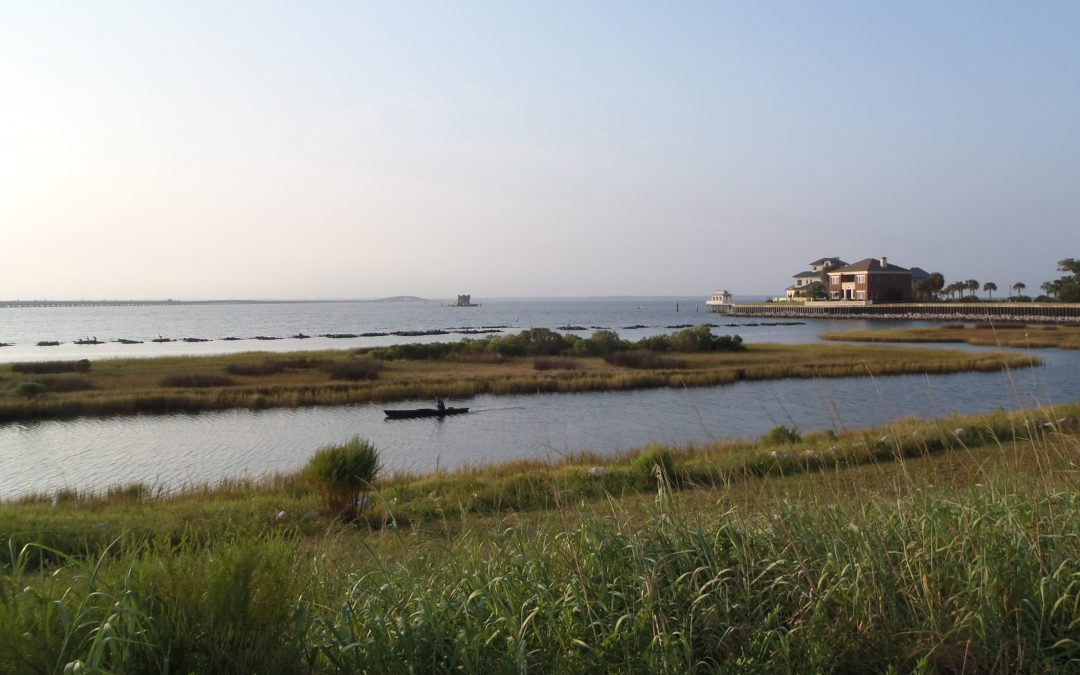
by Thomas Derbes II | Jun 21, 2024
In Part 1 of The Estuary’s Natural Filtration System article, we discussed the major contributors to natural filtration inside of the estuary. These examples included oysters, marsh plants, and seagrasses. In Part 2, we will discuss the smaller filter-feeding organisms including tunicates, barnacles, clams, and anemones.
Tunicates
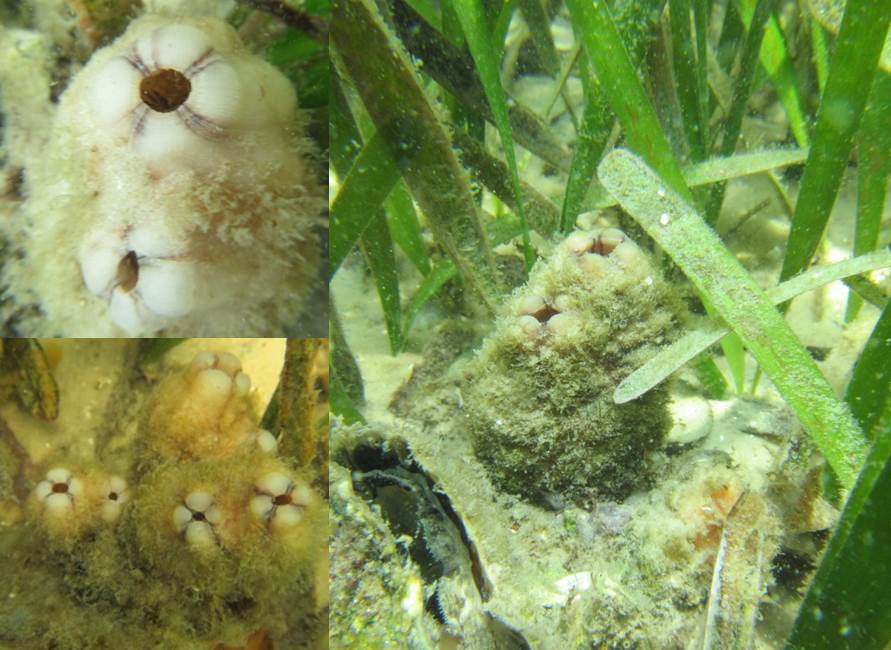
Pleated Sea Squirt – Photo Credit: Don Levitan, PH.D. FSU
Tunicates, also known as sea squirts, are very interesting marine invertebrates and can be easily confused for a sponge. There are many different types of tunicates in the estuaries and can be either solitary or colonial. You might’ve seen these at an aquarium attached to different substrates, and when removed from the water, their name sea squirt comes into play. Tunicates have a defense mechanism to shoot out the water inside their body in hopes of being released by any predator.
Tunicates are filter feeders and intake water through their inhalant siphons and expel waste and filtered water through their exhalant siphons. Tunicates can filter out phytoplankton, algae, detritus, and other suspended nutrients. The tunicate produces a mucus that catches these nutrients as it passes through, and the mucus is then conveyed to the intestine where it is digested and absorbed.
An invader to the Gulf of Mexico, the Pleated Sea Squirt (Styela plicata), hitched rides on the hulls of ships and found the Gulf of Mexico waters very favorable. You can sometimes spot these organisms on ropes that have been submerged for a long period of time in salty waters. Even though they are non-native, these sea squirts can filter, on average, 19 gallons of water per day.
Barnacles
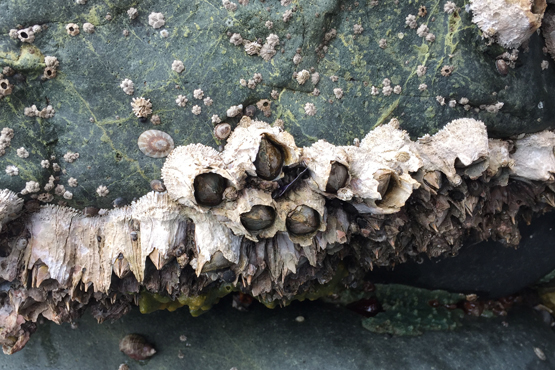
Barnacles along the seashore is a common site for many.
Photo: NOAA
One organism that seems ubiquitous worldwide is the barnacle (Genus Semibalanus and Genus Lepas). The Genus Semibalanus contains the common encrusting barnacle we are accustomed to seeing in our waterways along pilings, submerged rocks, and even other animals (turtles, whales, crabs, and oysters). The Genus Lepas contains Gooseneck Barnacles and can be seen attached to flotsam, floating organic debris, and other hard surfaces and have a stalk that attaches them to their substrate. Interesting fact, certain gooseneck barnacle species are eaten in different parts of the world.
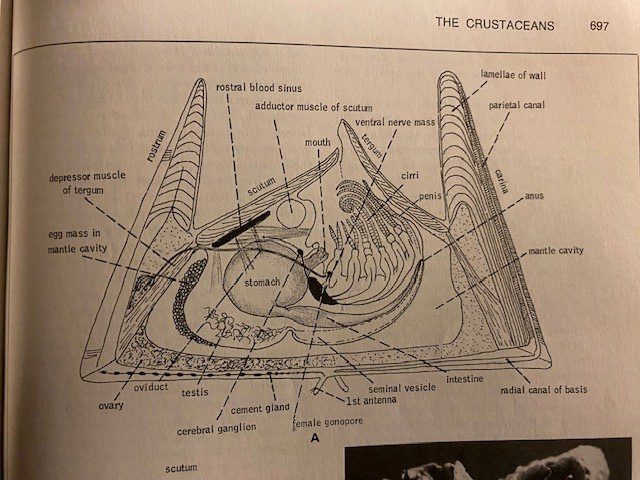
This image from a textbook shows the internal structure of a barnacle. Notice the shrimplike animal on its back with extendable appendages (cirri) for feeding.
Image: Robert Barnes Invertebrate Zoology.
Barnacles have over 2,100 species, are closely related to crabs and lobsters, and are a part of the subphylum Crustacea. At first glance, you might not think a barnacle is closely related to crabs, but when you remove the hard plates surrounding it, the body looks very similar to a crab. Barnacles also have life cycle stages that are similar to crabs; the nauplius and cyprid developmental stages. Inside of the hard plates is an organism with large feather-like appendages called cirri. When covered by water, the barnacles will extend their cirri into the water and trap microscopic particles like detritus, algae, and zooplankton. Barnacles are at the mercy of tides and currents, which makes quantifying their filtering ability difficult.
Hard Clams
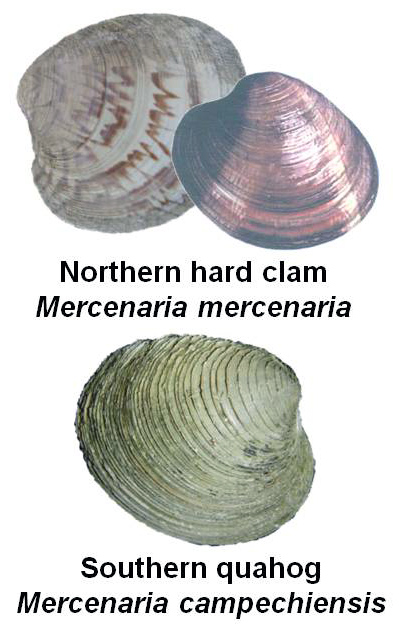
Clams of North Florida – UF/IFAS Shellfish
Even though not as abundant in the Florida Panhandle as they were in the 1970’s – 1980’s, hard clams (Mercenaria mercenaria and M. campechiensis) can still be found in the sand along the shoreline and near seagrass beds. These clams are also known as Quahogs and are in the family Veneridae, commonly known as the Venus clam family, and contain over 500 living species. Most of the clams in the family Veneridae are edible and Quahogs are the types of clams you would see in a clam chowder or clam bake.
Being the only bivalve on this list does not make it any less important than the oyster or scallop on Part 1’s list. In fact, a full-grown adult Southern Quahog clam can filter upwards of 20 gallons of water per day and have a lifespan of up to 30 years. Clams also live a much different lifestyle than their oyster and scallop cousins. Clams spend the majority of their life under the sand. Their movement under the sand helps aerate and mix the soil, which can sometimes stimulate seagrass growth.
Right outside the Florida Panhandle and in the Big Bend area, Quahog clams are commercially farmed in Cedar Key. Southern Quahog clams are also being used for restoration work in South Florida. Clams are being bred in a hatchery and their “seed” are being released into Sarasota Bay to help tackle the Red Tide (Karenia brevis) issue. According to the project’s website, they have added over 2 million clams since 2016, and the clams are filtering over 20 million gallons of seawater daily.
Anemones
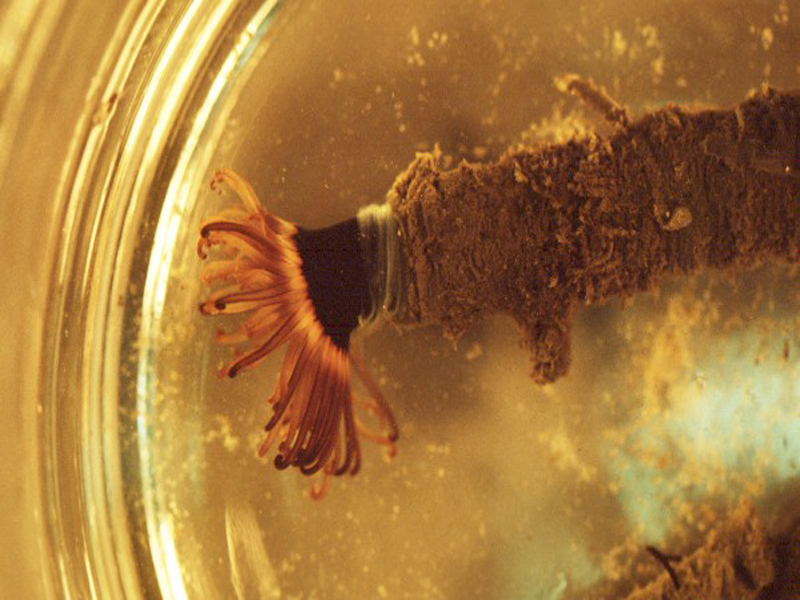
Tube-Dwelling Anemone Under Dissection Scope – UF/IFAS Shellfish
Anemones are beautiful Cnidarians resembling an upside-down, attached jellyfish, which couldn’t be closer to the truth. The phylum Cnidaria contains over 11,000 species of aquatic animals including corals, hydroids, sea anemones, and, you guessed it, jellyfish. Anemones come in many different shapes and sizes, but the common estuary anemones include the tube-dwelling anemone (Ceriantheopsis americana) and the tricolor anemone (Calliactis tricolor), also known as the hitchhiking anemone. If you have ever owned a saltwater aquarium, you might have run into the pest anemone Aiptasia (Aiptasia sp.).
Anemones filter feed with their tentacles by catching plankton, detritus, and other nutrients as the tide and current flows. The tentacles of the anemone are lined with cnidocytes that contain small amounts of poison that will stun or paralyze the prey. The cnidae are triggered to release when an organism touches the tentacles. If the anemone is successful in immobilizing the prey, the anemone will guide the prey to their mouth with the tentacles. Just like the barnacle, anemones are at the mercy of the tides and currents, and filtration rates are hard to calculate. However, if you ever see an anemone with food around, they move those tentacles to and from their mouths quickly and constantly!
In Parting
As you can see, there are many different natural filters in our estuary. Healthy, efficiently filtering estuaries are very important for the local community and the quality of the waters we love and enjoy. For more information on our watersheds and estuaries and how to protect them, visit Sea Grant’s Guide To Estuary-Friendly Living.
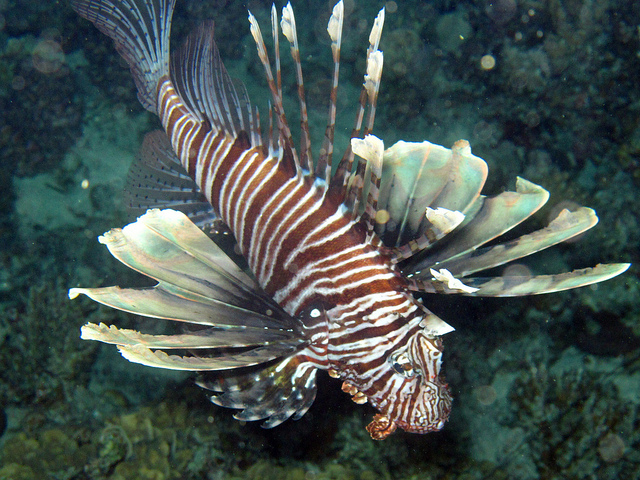
by Rick O'Connor | Jun 7, 2024
Northwest Florida Regional Lionfish Workshop Notes
Feb 8, 2024 – Ft. Walton Beach, Florida
Lionfish first appeared in the northern Gulf of Mexico in 2010. At that time, it was a huge concern – and still is – but it got the public’s attention. Fishermen were concerned that lionfish would deplete targeted species they enjoyed catching and made money from. The number of lionfish divers were encountering was staggering and videos showed reefs that were basically covered with them, and few other species around.

The Invasive Lionfish
The community reacted by initiating a few local tournaments with awards and prizes and there was a push to harvest them commercially as a food product – lionfish are very good to eat. In 2013 the Florida Fish and Wildlife Conservation Commission and Florida Sea Grant held its first regional workshop to discuss the state of the lionfish invasion in our area and how management efforts were going. It was reported at the time that lionfish densities off the Pensacola area were among the highest in the South Atlantic region. They seemed to have a preference for artificial reefs over natural ones and there were studies suggesting how frequently lionfish removal efforts were needed in order to decrease their population. Studies showed that on reefs where lionfish were abundant, red snapper stayed farther away and further up in the water column. There were several talks on the general biology of the creature – which was still unknown to much of the public.
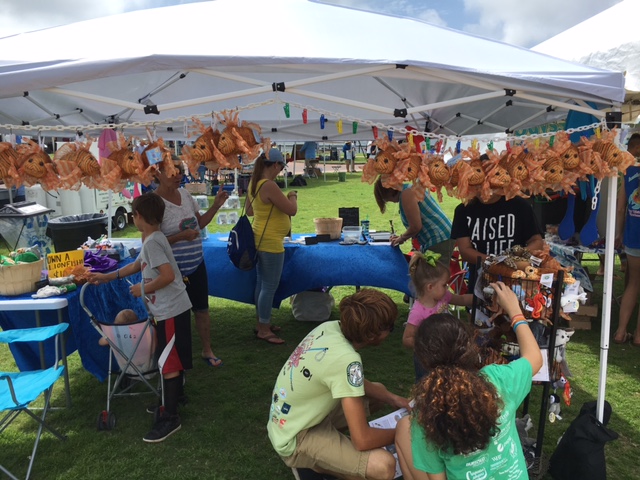
The Lionfish Removal and Awareness Day Event in 2017.
Photo: Rick O’Connor
In 2019 the 2nd regional workshop occurred. The densities of lionfish had declined – possibly due to the commercial and recreational harvest efforts as well as the lionfish tournaments that were occurring. It was at this time that divers began to notice skin lesions on some of the fish and there were questions as to what was causing this and whether it had an impact on their populations. The commercial harvesting had not gone as well as expected primarily due to pricing issues, but education/outreach efforts had made a big impact – almost everyone knew about lionfish and the problems they were causing. Some on the commercial harvest side of the issue had turned to taking visiting divers out to hunt lionfish. For many this was a more lucrative venture than harvest and selling. But people still wanted to eat lionfish and finding local places that served was not easy.
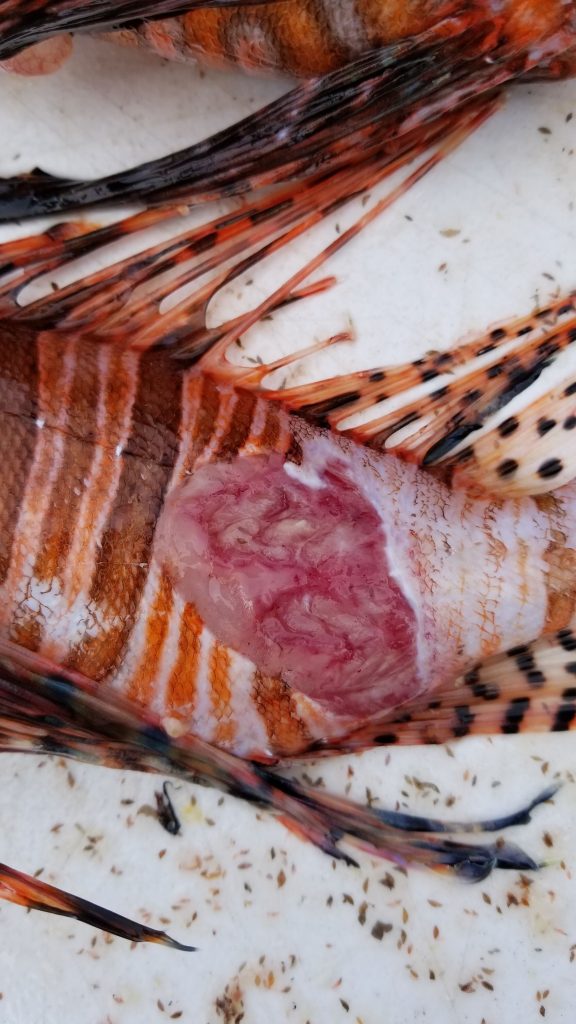
Skin ulcers have been found on many lionfish in the region.
Photo: Alex Fogg
The 3rd Regional Lionfish Workshop was scheduled for 2024 and occurred in February in Ft. Walton Beach. 52 attended to hear presentations on the latest research, commercial harvest, tournaments, and education/outreach efforts. Here are some highlights from those presentations.
Research Updates
- The high densities in 2013 had declined by 2019 but there was no update on current densities of lionfish. Anecdotal evidence from divers suggested that they may be increasing again.
- The source of the skin lesions was still unknown, but some evidence suggested that it could have contributed to the decline of lionfish between 2013-2019. The lesions are still occurring in lionfish.
- eDNA studies by the University of West Florida found lionfish eDNA in samples collected from the upper portions of local estuaries – suggesting they may have entered the bay. The research team also found lionfish eDNA in the feces of some shorebirds nesting in the area. This triggered more questions than answers.
- PCB monitoring in fish tissue obtained from the USS Oriskany as part of the artificial reef permit. The initial target species for this study have declined on the wreck – or at least at not as frequently harvested as the study required. However, lionfish have increased on the reef and are now being used to continue this monitoring project.
Commercial Harvest Updates
- Florida Sea Grant presented results of a regional survey of seafood buyers and restaurants. Few were selling lionfish. Concerns included size and yield from processing, adequate supply, and the fact they were venomous. However, almost all of them were interested in selling lionfish and were willing to learn how to navigate these barriers to make it happen.
Tournament Updates
- The FWC Lionfish Challenge is still going strong, and they plan to continue to support it.
- The Emerald Coast Open is still the largest lionfish tournament in the country. This year they harvested over 18,000 lionfish.
- Overall, across the region and state, lionfish tournaments were on the decline.
- International tournaments reported mixed results – some doing well, some not so well. Those doing well were doing very well.
- A new tournament was kicking off in Pensacola during the fall season – the Pensacola Lionfish Shootout.
Education and Outreach Updates
- Citizen science programs are increasing.
- Many school programs have included lionfish topics within their lesson plans.
Some questions remain unanswered currently.
- Have the densities of lionfish increased or decreased since 2019?
- What is the cause of the skin lesions found on some lionfish?
- Are lionfish inhabiting parts of our estuaries?
- Can we get lionfish on more menus in the region?
The next regional workshop is scheduled for 2029. Until then, many will be involved in trying to answer these questions and manage this problem. If you have any questions concerning the current state of lionfish in our area, please contact your county extension office.
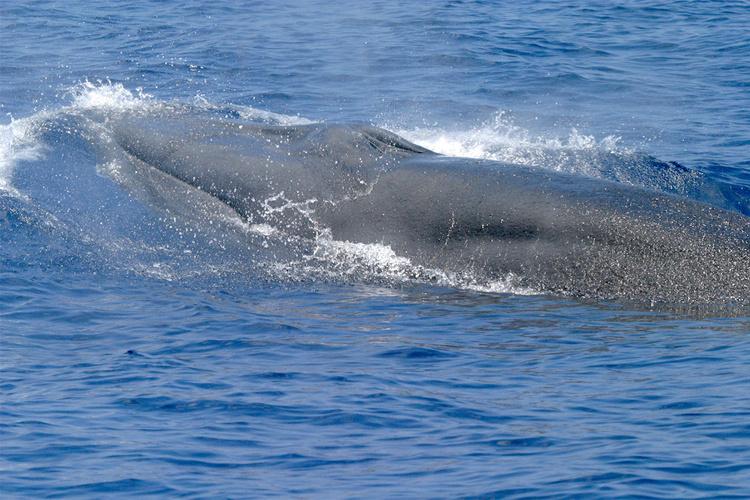
by Rick O'Connor | May 17, 2024
Recently I participated in a local festival to educate the public about the Rice’s Whale – the newly described species in the Gulf of Mexico that is now listed as critically endangered, possibly the most endangered whale in the world’s oceans. I honestly did not know enough about it to provide much education and chose to do terrapin conservation at my table instead (something I know more about) but have since learned much about this new member of the Gulf community.
One of the more frequent comments I heard during the event was “I did not know we even had whales in the Gulf”. This is understandable since we rarely see them – most of us have never seen one. When we think of whales we think of colder climates like Alaska, New England, and the colder waters off California. But many large whales must give birth to their smaller calves in warmer waters – so, they make the trek to tropical locations like Hawaii and Florida to do so. But there are also resident whales in the tropical seas.
You first must understand that the term “whale” does not only mean the large creatures of whale hunting fame, but any member of the mammalian order Cetacea. Cetaceans include both the large baleen whales – like the blue, gray, and right whales – but also the toothed whales – like the sperm, orca, and even the dolphins.
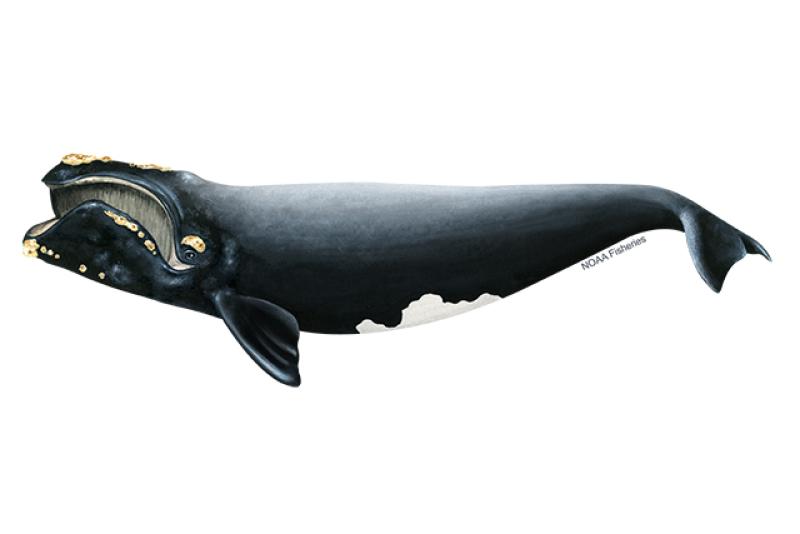
The Right whale is another critically endangered whale found in the Gulf of Mexico. Image: NOAA.
There are 28 cetaceans that have been reported from the Gulf, 21 of those routinely inhabit here. Most exist at and beyond the continental shelf – hence we do not see them. Only two frequent the waters over the shelf – the Atlantic Bottlenose Dolphin and the Atlantic Spotted Dolphin, and only one is routinely seen near shore – the Atlantic Bottlenose Dolphin.
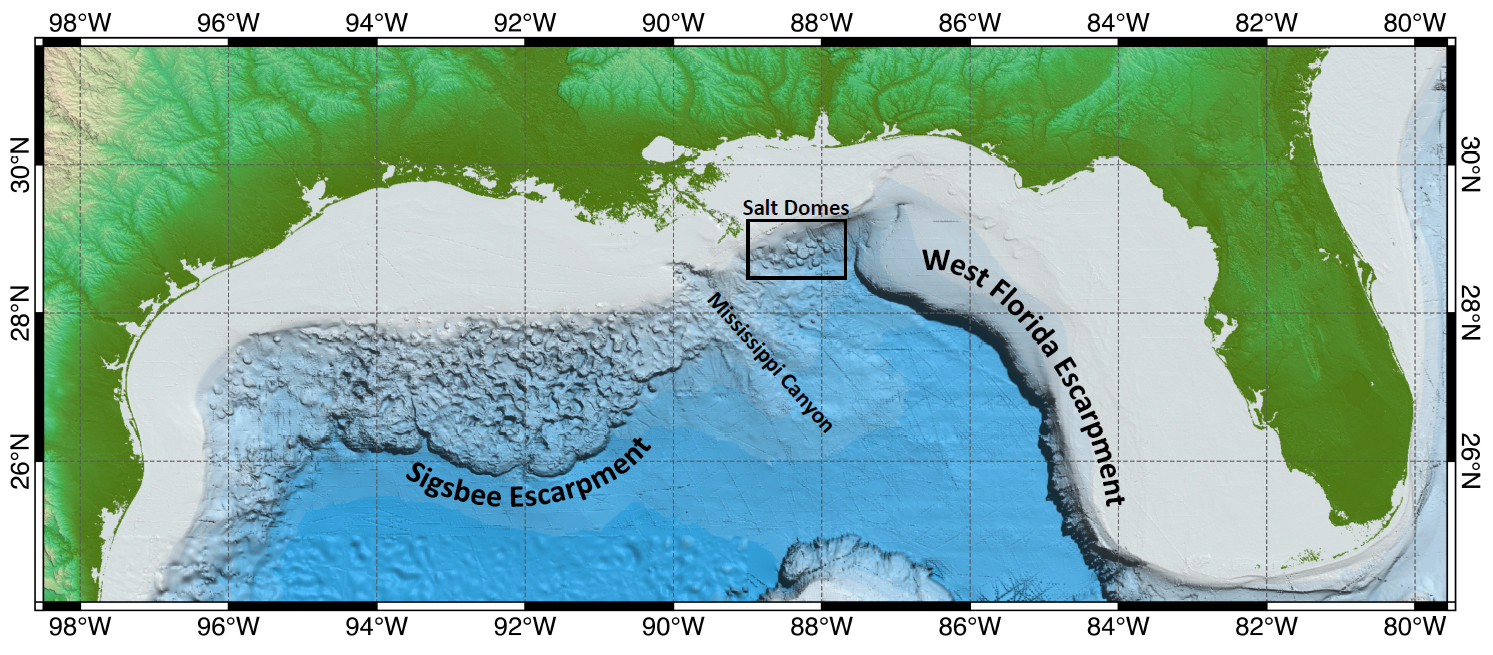
This image shows the location of the continental shelf and thus the location of most of the whales found in the Gulf of Mexico. Image: NOAA.
But offshore, out at the edge of the continental shelf, exists several species of large and small cetaceans. The endangered Sperm, Sei, Fin, Blue, Humpback, and Northern Right whales have been seen. Of those only sperm whales are common. Others include several beaked whales (which resemble dolphins but are much larger), large pods of other species of dolphins, pygmy and dwarf sperm whales, pygmy and false killer whales (as well as the killer whale itself), and other baleen whales such as the Minke and Bryde’s whale.
The Bryde’s whale is one of interest to this story.
The Bryde’s whale (pronounced “brood-duss” – Balaenoptera edeni) is a medium sized baleen whale, reaching lengths of about 50 feet and weighing 30 tons. It is often confused with the larger sei whale. They are found in tropical oceans across the planet and are not thought to make the large migrations of many whales due to the fact it is already here in the tropics for birth, and its food source is here as well. They reside in the northeastern Gulf of Mexico extending from the DeSoto Canyon, off the coast of Pensacola, to the shelf edge near Tampa. They appear to travel alone or in small groups of 2-5 animals. They feed on small schooling fish, such as pilchards, anchovies, sardines, and herring. Their reproductive cycle in the Gulf is not well understood.

The Bryde’s whale was thought to be the only resident baleen whale in the Gulf of Mexico. Photo: NOAA.
Strandings have occurred – as of 2009, 33 have been logged. There are no records of mortality due to commercial fishing line entanglement, but vessel strikes have occurred. Due to their large population across the planet, they were not considered for listing under the Endangered Species Act, but that may change in the Gulf region due to human caused mortality. Between 2006-2010 it was estimated that 0.2 Bryde’s whales died annually due the vessel strikes.
In the 1960s Dr. Dale Rice described the Gulf of Mexico population as a possible subspecies. It is the only baleen whale that regularly inhabits the Gulf of Mexico. And ever since that time scientists examining stranded animals thought they may be dealing with a different species.
In the 1990s Dr. Keith Mullin began examining skull differentiation and genetic uniqueness from stranded animals of the Gulf population. Dr. Patricia Rosel and Lynsey Wilcox picked up the torch in 2008. In 2009 a stranded whale, that had died from a vessel strike, was found in Tampa Bay and provided Dr. Rosel more information. In 2019 a stranded whale, that had died from hard plastic in gut in the Everglades, was examined by Dr. Rosel and her team and, with data from this skull, along with past data, determined that it was in fact a different species. The new designation became official in 2019.

The newly described Rice’s whale only exists in the Gulf of Mexico. Photo: NOAA.
The new whale was named the Rice’s whale (Balaenoptera ricei) after Dr. Dale Rice who had first describe it as a subspecies in the 1960s. With this new designation everything changed for this whale. This new species only lives in the Gulf of Mexico, and it was believed there were only about 50 individuals left. Being a marine mammal, it was already protected by the Marine Mammal Protection Act, but with this small population it was listed as critically endangered and protected by the Endangered Species Act.
New reviews and publications began to come out about the biology and ecology of this new whale. Rice’s whales do exist alone or in small groups and currently move between the 100m and 400m depth line along the continental shelf from Pensacola to Tampa. Diet studies suggest that it may feed near the seafloor, unlike their Bryde’s whale cousins. They may have lived all across the Gulf of Mexico at the 100-400m line at one time. They prefer warmer waters and do not seem to conduct long migrations.

The area where the Rice’s whale currently exists. Image: NOAA.
Being listed under the Endangered Species Act, NOAA National Marine Fisheries (NMFS) was required to develop a recovery plan for the whale. NMFS conducted a series of five virtual workshops between October 18 and November 18 in 2021. Workshop participants included marine scientists, experts, stakeholders, and the public. There were challenges identified from the beginning. Much of the natural history of this new whale was not well understood. Current and historic abundance, current and historic distribution, population structure and dynamics, calving intervals and seasonality, diet and prey species, foraging behavior, essential habitat features, factors effecting health, and human mortality rates all needed more research.
At the end of the workshop the needs and recommendations fell into several categories.
Management recommendations
- Create a protected area
- Restrict commercial and recreational fishing in such – require ropeless gear
- Require VMS system on all commercial and recreational vessels
- Require reporting of lost gear and removal of ghost gear
- Risk assessment for aquaculture, renewable energy, ship traffic, etc.
- Prohibit aquaculture in core area and suspected areas
- Reduce burning of fossil fuels
- Prohibit wind farms in core area
- Renewable energy mitigation – reduce sound, night travel, passive acoustic
- Develop spatial tool for energy development and whale habitat use
- Require aquaculture to monitor effluent release
- Develop rapid response focused on water quality issues
- Develop rapid response to stranding events
- Reduce/cease new oil/gas leases
- Reduce microplastics and stormwater waste discharge
- Work with industry to use technologies to reduce noise
- Reduce shipping and seismic sound within the core area
- Restrict speed of vessels
- Maintain 500m distance – require lookouts/observers while in core
- Consider “areas to be avoided”
Monitoring recommendations
- Long-term spatial monitoring
- Long-term prey monitoring
- Electronic monitoring of commercial fishing operations
- Necropsies for pollution and contaminants
Outreach and Engagement are needed
Top Threats to Rice’s Whale from the workshop Include:
- Small population size – vessel collisons
- Noise
- Environmental pollutants
- Prey – Climate change – marine debris
- Entanglement – disease – health
- Offshore renewable energy development
The Endangered Species Act (ESA) requires the designation of critical habitat for listed species. In July 2023 NOAA proposed the area along the U.S. continental shelf between 100-400 meters depth as critical habitat. Comments on this designation were accepted through October 6, 2023.

The proposed protection zone for the Rice’s whale including the core area. Image: NOAA.
Vessel strikes are a top concern. It is understood that the most effective method of reducing them is to keep vessels and whales apart and reduce vessel speeds within the approved critical habitat.
On May 11, 2021, NOAA Fisheries received a petition submitted by five nongovernmental agencies and one public aquarium to establish a year-round 10-knot vessel speed limit in order the protect the Rice’s whale from vessel collisions. The petition included other vessel mitigation measures. On April 7, 2023, NOAA published a formal notice in the Federal Register initiating a 90-day comment period on this petition request. The comment period closed on July 6, 2023, and they received approximately 75,500 comments. After evaluating comments, and other information submitted, NOAA denied the petition on October 27, 2023.
NOAA concluded that fundamental conservation tasks, including finalizing the critical habitat designation, drafting a species recovery plan, and conducting a quantitative vessel risk assessment, are all needed before we consider vessel regulations. NOAA does support an education and outreach effort that would encourage voluntary protection measures before regulatory ones are developed.
On that note, the Bureau of Ocean Energy Management (BOEM) did issue voluntary precautionary measures the industry could adopt to help protect the Rice’s whale. These include:
- Training observers to reduce vessel collisions.
- Documenting and recording all transits for a three-year period.
- All vessels engaged in oil and gas, regardless of size, maintain no more than 10 knots and avoid the core area after dusk and before dawn.
- Maintain 500m (1700 feet) distance from all Rice’s whales.
- Use automatic identification system on all vessels 65’ or larger engaged in oil and gas.
- These suggestions would not apply if the crew/vessel are at safety risk.
So…
This is where the story is at the moment…
This is what is up with the Rice’s whale in the Gulf of Mexico.
We will provide updates as we hear about them.
References
1 An Overview of Protected Species in the Gulf of Mexico. NOAA Fisheries Service, Southeast Regional Office, Protected Resources Division. 2012. https://www.boem.gov/sites/default/files/oil-and-gas-energy-program/GOMR/NMFS-Protected-Species-In-GOM-Feb2012.pdf.
2 Rosel, P.E., Mullin, K.D. Cetacean Species in the Gulf of Mexico. DWH NRDA Marine Mammal Technical Working Group Report. National Marine Fisheries Service. Southeast Fisheries Science Center.
https://www.fws.gov/doiddata/dwh-ar-documents/876/DWH-AR0106040.pdf.
3 A New Species of Baleen Whale in the Gulf of Mexico. 2024. NOAA Fisheries News.
https://www.fisheries.noaa.gov/feature-story/new-species-baleen-whale-gulf-mexico.
4 Rice’s Whale. NOAA Fisheries Species Directory.
https://www.fisheries.noaa.gov/species/rices-whale.
5 Rice’s Whale. Marine Mammal Commission.
https://www.mmc.gov/priority-topics/species-of-concern/rices-whale/.
6 Rice’s Whale: Conservation & Management. NOAA Species Directory. 2024.
https://www.fisheries.noaa.gov/species/rices-whale/conservation-management.
7 BOEM Issues Voluntary Precautionary Measures for Rice’s Whale in the Gulf of Mexico. 2023. U.S. Department of Interior. Bureau of Ocean Energy Management.
https://www.boem.gov/newsroom/notes-stakeholders/boem-issues-voluntary-precautionary-measures-rices-whale-gulf-mexico.
8 NOAA Fisheries Denies Petition to Establish a Mandatory Speed Limit and Other Vessel Mitigation Measures to Protect Endangered Rice’s Whales in the Gulf of Mexico. NOAA Fisheries News. FB23-079. Gulf of Mexico Fishery Bulletin. October 27, 2023.
https://www.fisheries.noaa.gov/bulletin/noaa-fisheries-denies-petition-establish-mandatory-speed-limit-and-other-vessel-0#:~:text=NOAA%20Fisheries%20denied%20a%20petition,with%20rulemaking%20at%20this%20time..
9 Petition to Establish Vessel Speed Measures to Protect Rice’s Whale. NOAA Fisheries. Protected Resources and Actions.
https://www.fisheries.noaa.gov/action/petition-establish-vessel-speed-measures-protect-rices-whale.
10 Denial of Gulf Protections Could Lead to the “Permanent Loss” of Rice’s Whale. Jim Turner. WUSF News. October 31, 2023.
https://www.wusf.org/environment/2023-10-31/denial-of-gulf-protections-could-lead-to-the-permanent-loss-of-rices-whales.

























